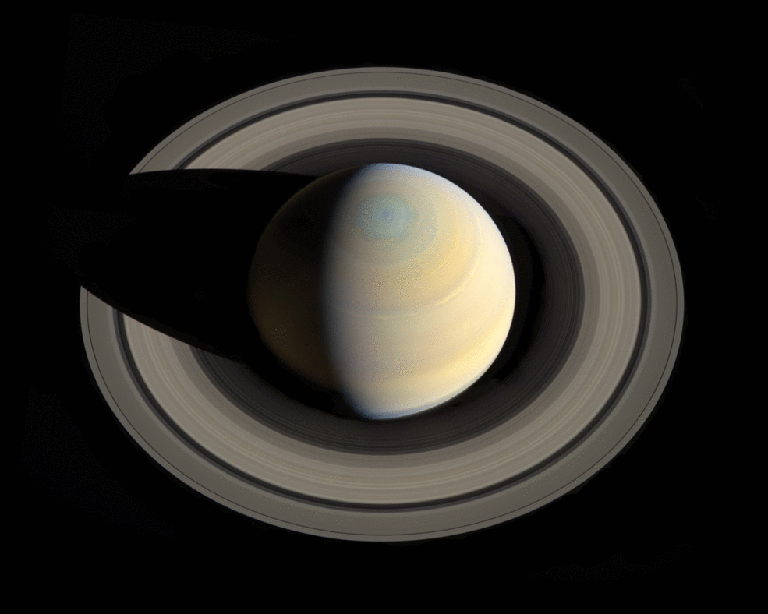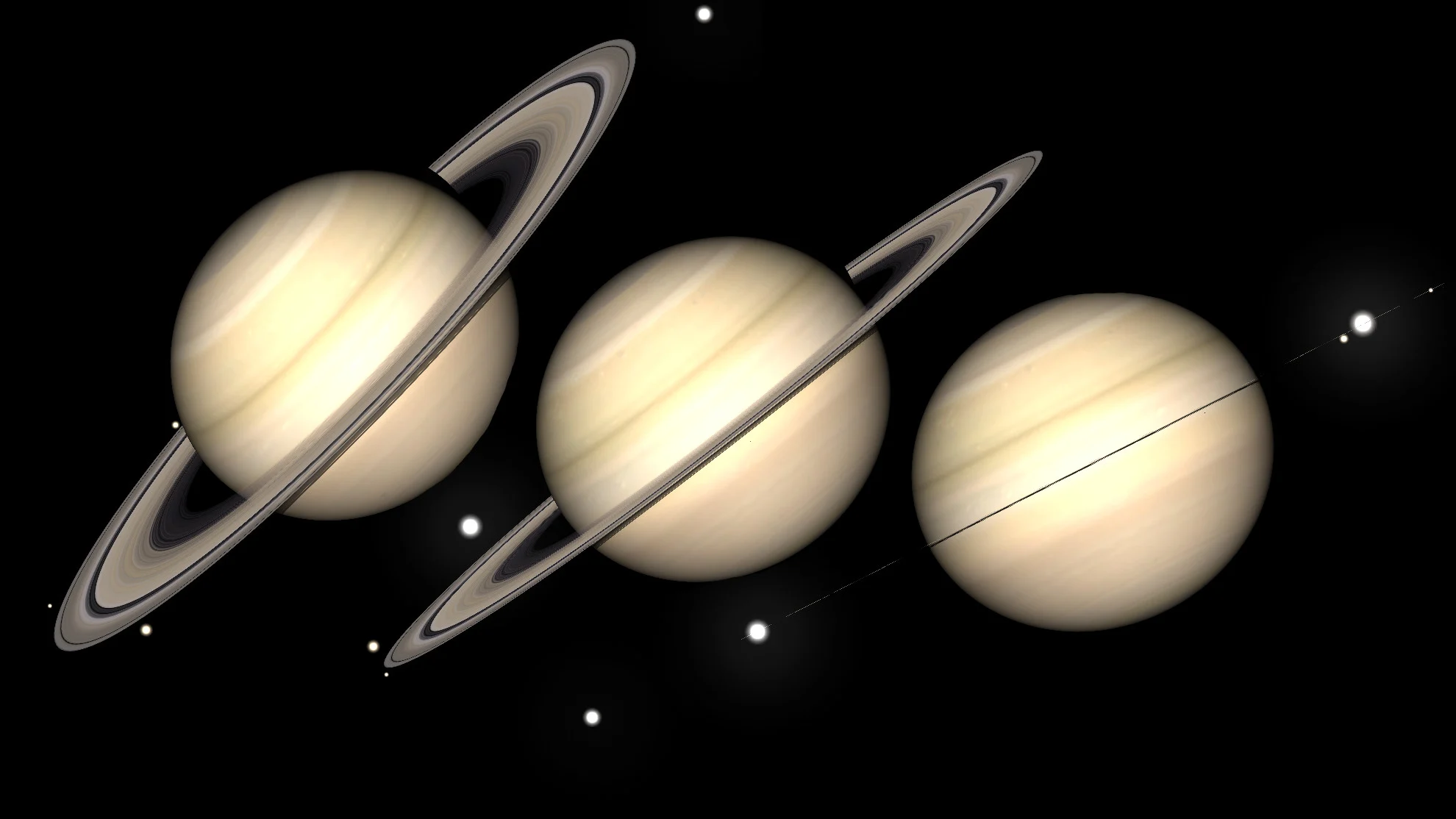Discover How Saturn’s Rings Are Vanishing Rapidly, Potentially Leaving the Planet Ringless in Just 100 Million Years
TL;DR
NASA’s latest research shows that Saturn’s iconic rings are losing material at an alarming rate, filling an Olympic-sized swimming pool with water products every half hour. This “ring rain” is driven by Saturn’s gravity, which pulls icy particles inward, causing the rings to dissipate. Scientists now estimate that Saturn’s rings may vanish within the next 100 million years, a striking contrast to the planet’s 4 billion-year history. These findings suggest that the rings are relatively young, likely formed from collisions between icy moons, and challenge long-held assumptions about their age.
______________
NASA’s research has confirmed that Saturn is losing its iconic rings at the highest rate predicted by the Voyager 1 and 2 observations from decades ago. The planet’s gravity is pulling the rings inward as icy particles fall onto Saturn due to its magnetic field.
“We estimate this ‘ring rain’ is draining water products from Saturn’s rings fast enough to fill an Olympic-sized swimming pool every half an hour,” said James O’Donoghue from NASA’s Goddard Space Flight Center in Greenbelt, Maryland. “At this rate alone, the rings will disappear in 300 million years, but when you factor in the ring material falling onto Saturn’s equator detected by the Cassini spacecraft, the rings have less than 100 million years left. That’s relatively brief compared to Saturn’s age of over 4 billion years.” O’Donoghue is the lead author of a study about Saturn’s ring rain published in Icarus.
Scientists have long debated whether Saturn’s rings have been around since its formation or if they formed later. The new findings support the idea that they are likely no older than 100 million years, as it would take this long for the C-ring to evolve into its current state, assuming it was once as dense as the B-ring. “We’re fortunate to be able to observe Saturn’s ring system, which seems to be in its mid-life stage. But if rings are temporary, we may have just missed seeing large ring systems around Jupiter, Uranus, and Neptune, which today only have thin ringlets,” O’Donoghue added.
Various theories have been proposed to explain the rings’ origin. If Saturn acquired them later, the rings could have formed from collisions between small icy moons orbiting Saturn, possibly triggered by gravitational disturbances from a passing asteroid or comet.

The first clues of ring rain came from Voyager’s observations of seemingly unrelated phenomena: strange variations in Saturn’s ionosphere (its electrically charged upper atmosphere), changes in ring density, and three narrow dark bands around Saturn’s northern mid-latitudes. These dark bands appeared in images of Saturn’s hazy upper atmosphere (stratosphere) taken by NASA’s Voyager 2 mission in 1981.
In 1986, Jack Connerney from NASA Goddard published a paper in Geophysical Research Letters, linking these dark bands to Saturn’s massive magnetic field. He suggested that electrically charged ice particles from Saturn’s rings were flowing down the planet’s magnetic field lines, depositing water into Saturn’s upper atmosphere, creating the dark bands seen in Voyager images.
Saturn’s rings are primarily made up of water ice, with particles ranging in size from tiny dust grains to boulders several meters wide. These particles are caught in a delicate balance between Saturn’s gravity pulling them inward and their orbital velocity trying to fling them outward. Small particles can become electrically charged by sunlight or plasma clouds from micrometeoroid impacts on the rings. Once charged, these particles can be pulled by Saturn’s magnetic field into the planet’s atmosphere, where they vaporize, and the water interacts with Saturn’s ionosphere.
One outcome of these reactions is an increase in the lifespan of H3+ ions (which consist of three protons and two electrons). When energized by sunlight, these ions emit infrared light, which O’Donoghue’s team detected using special instruments on the Keck telescope in Mauna Kea, Hawaii.
Their observations revealed glowing bands in both hemispheres of Saturn, where the magnetic field lines cross the ring plane and enter the planet. The amount of ring rain they measured was surprisingly consistent with the high values estimated by Connerney and his colleagues over three decades earlier, with most of the rain falling in one region in the southern hemisphere.
The team also detected a glowing band at a higher latitude in the southern hemisphere, where Saturn’s magnetic field intersects with Enceladus’ orbit, a geologically active moon that ejects water ice into space through geysers. “That wasn’t entirely unexpected,” Connerney said. “We had already linked Enceladus and the E-ring to water sources based on another dark band in those old Voyager images.” The geysers, first observed by Cassini in 2005, are believed to come from a subsurface ocean beneath the moon’s icy surface, making Enceladus a top candidate for harboring extraterrestrial life.
The team hopes to study how ring rain changes with Saturn’s seasons. As the planet follows its 29.4-year orbit, the rings experience varying amounts of sunlight. Since UV light from the Sun charges the ice particles, which makes them respond to Saturn’s magnetic field, changing sunlight exposure could alter the rate of ring rain.
The study was supported by NASA and the NASA Postdoctoral Program at NASA Goddard, managed by the Universities Space Research Association. The W.M. Keck Observatory is operated as a partnership between the California Institute of Technology, the University of California, and NASA, with data accessible through the Keck archive. The authors acknowledge the cultural significance of Mauna Kea to the indigenous Hawaiian community and are grateful for the opportunity to conduct their observations from this sacred mountain.




